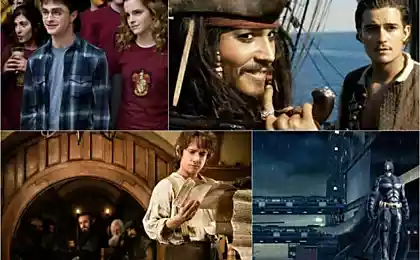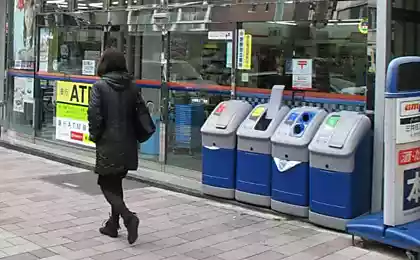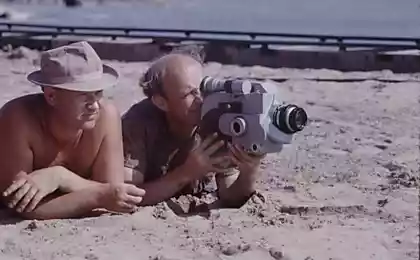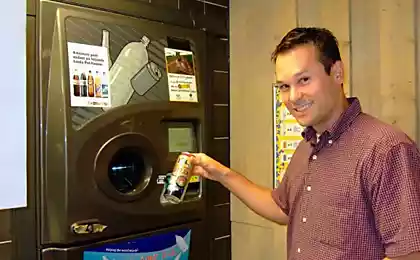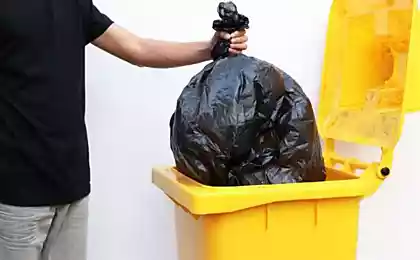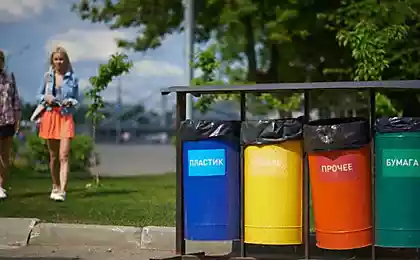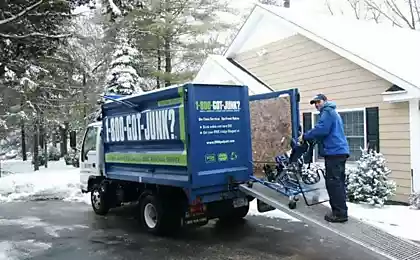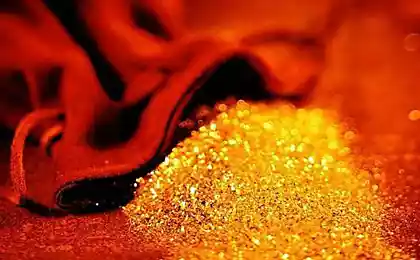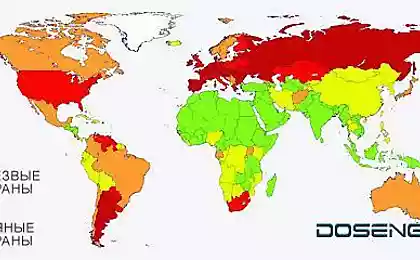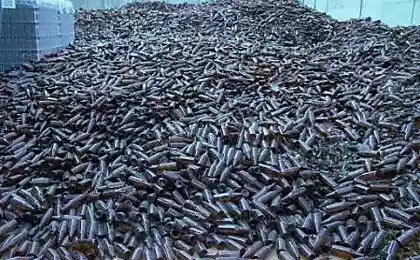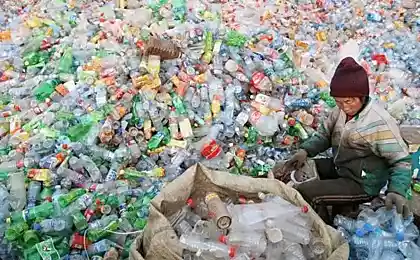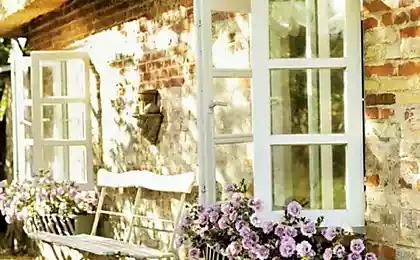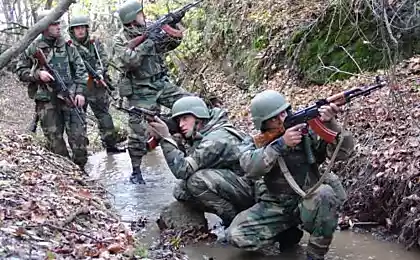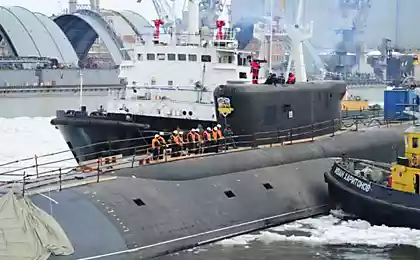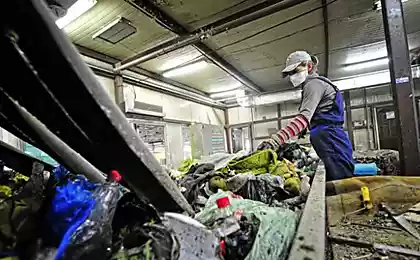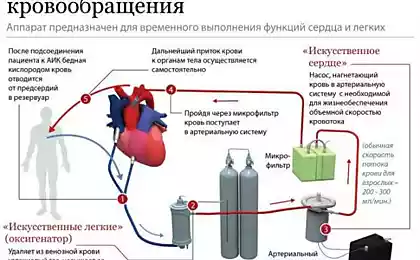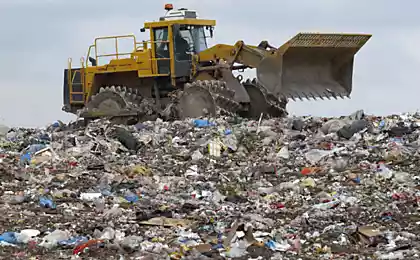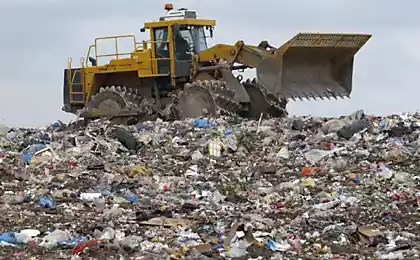657
Floating waste has collected nearly 1 million tons of garbage
Mr. Trash Wheel and a Professor at bin Wheel similar characters in children's cartoon, but actually they are supplied with energy by solar and hydro installations, and collect trash in Baltimore's inner Harbor.
They are so pretty, just as effective, Mr Trash Wheel and a Professor at bin Wheel holders helically-shaped, have large wide eyes, and have the superpower to suck the plastic bags, Styrofoam containers, cigarette butts and other debris out of the water.
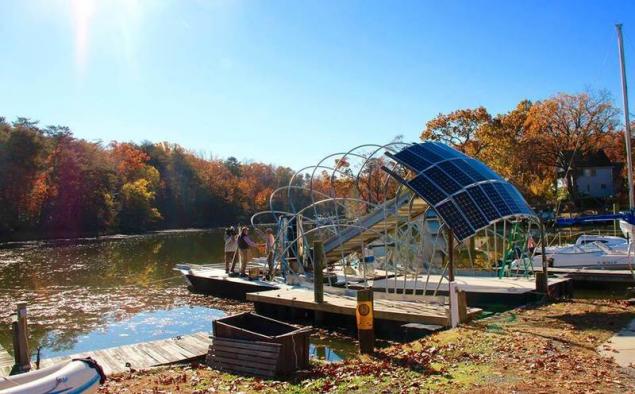
The original prototype bins were created by local sailor and engineer John Celletta (John Kellett), who really wanted to help the city with garbage, constantly floating in the inner Harbor (inner Harbor Baltimore).
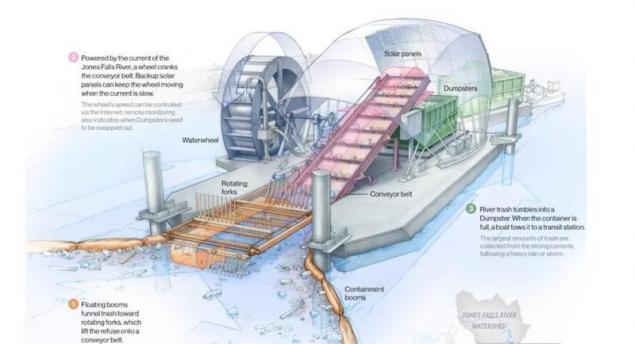
After trial and error and getting promising, but such a ridiculous to-wheel waste bins, Kellett received the help of the nonprofit organization water Baltimore, which supports environmental legislation and is committed to making green, safe and friendly place for people and animals.
Mr. Trash Wheel has its own Twitter account, and was the result of this Union: it uses solar battery and the current of the river to move the water wheel, which then activates the conveyor belt.
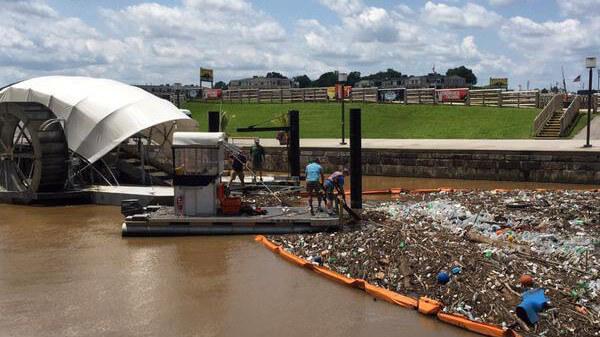
How does the garbage truck?
The two orange guides, collected from floats, help direct the debris to the Water Wheel, where by spring-loaded grips, resembling a rake, debris is captured and delivered to the conveyor, which in turn transportorul it in the garbage container mounted on a towed floating platform.
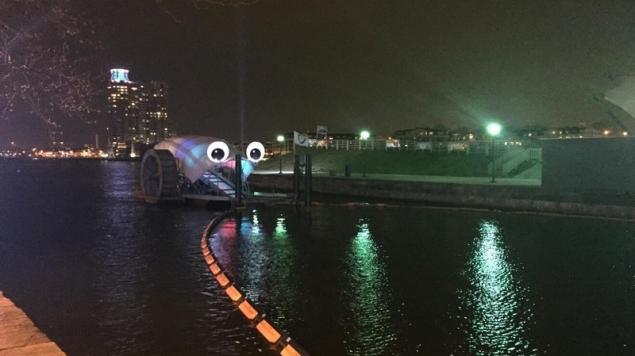
Once the dumpster is full, it is towed at a transit station, and Mr. Trash Wheel continues its work. But the worker should not work alone.
After the success of the water wheel trash collection, and Water Kellett Community raised funds for the women's version of the floating garbage: Professor Trash Wheel (it is, of course, highlight the painted eyelashes).
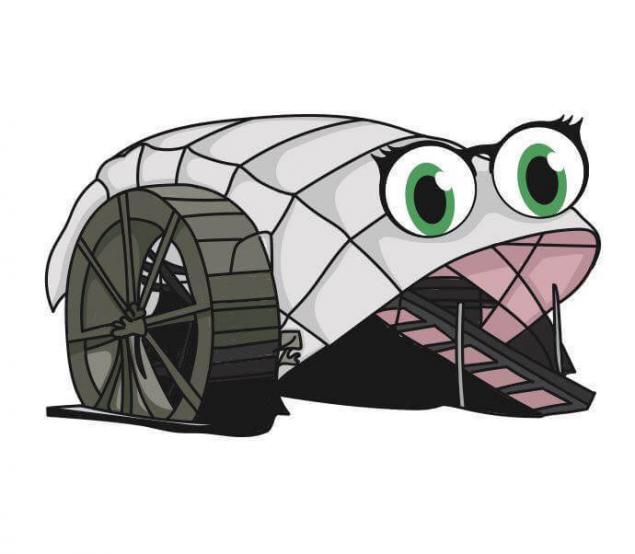
The Professor does his work in another part of the inner Harbor, but both of the waste bins are in great demand, especially after a rain or thunderstorm.
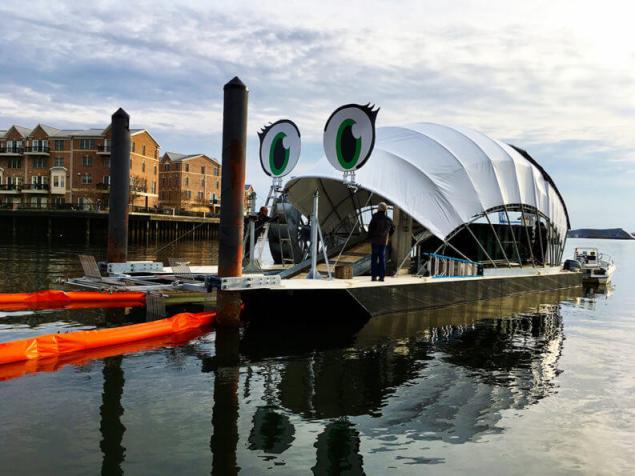
The source of much of the debris, which they raise, are in fact illegal dumps, waste from a vehicle, cigarette butts, and not people who litter directly into the river. The flow of the river eventually brings part of the city's garbage in the harbour.
Only one Mr. Trash Wheel at work all the time gathered more than 453 tons of garbage, it was established in 2014 and on average, each year collects about 70-100 dumpsters.
300 000 plastic bags, six thousands of glass bottles, nine million cigarette butts, as well as more exotic occasions like a live Python, constitute waste which is caught from the waterway. The resulting waste is burned to produce electricity, and in the future of Kellett plans to increase waste recycling opportunities.
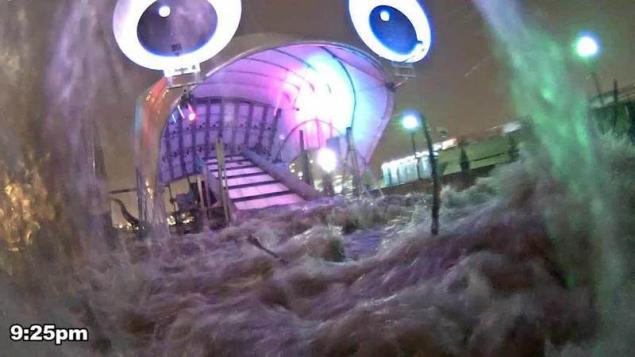
In order to continue your progress and help water organizations to achieve goals in support of cleanliness in Havana, by 2020 the city hopes to add additional wheel waste bin or two which will become a model for other cities and regions with problems of water pollution.
Kellett is also considering other potential locations for the application of the developed bins, such as Rio de Janeiro, Honolulu, and Denver.
Although the ultimate goal wheel of waste is becoming obsolete and unnecessary option by improving environmental norms and rules of conduct. published
P. S. And remember, only by changing their consumption — together we change the world! ©
Source: facepla.net/the-news/tech-news-mnu/5558-%D0%BC%D1%83%D1%81%D0%BE%D1%80%D0%BE%D1%81%D0%B1%D0%BE%D1%80%D0%BD%D0%B8%D0%BA-%D0%BD%D0%B0-%D1%80%D0%B5%D0%BA%D0%B5.html
They are so pretty, just as effective, Mr Trash Wheel and a Professor at bin Wheel holders helically-shaped, have large wide eyes, and have the superpower to suck the plastic bags, Styrofoam containers, cigarette butts and other debris out of the water.

The original prototype bins were created by local sailor and engineer John Celletta (John Kellett), who really wanted to help the city with garbage, constantly floating in the inner Harbor (inner Harbor Baltimore).

After trial and error and getting promising, but such a ridiculous to-wheel waste bins, Kellett received the help of the nonprofit organization water Baltimore, which supports environmental legislation and is committed to making green, safe and friendly place for people and animals.
Mr. Trash Wheel has its own Twitter account, and was the result of this Union: it uses solar battery and the current of the river to move the water wheel, which then activates the conveyor belt.

How does the garbage truck?
The two orange guides, collected from floats, help direct the debris to the Water Wheel, where by spring-loaded grips, resembling a rake, debris is captured and delivered to the conveyor, which in turn transportorul it in the garbage container mounted on a towed floating platform.

Once the dumpster is full, it is towed at a transit station, and Mr. Trash Wheel continues its work. But the worker should not work alone.
After the success of the water wheel trash collection, and Water Kellett Community raised funds for the women's version of the floating garbage: Professor Trash Wheel (it is, of course, highlight the painted eyelashes).

The Professor does his work in another part of the inner Harbor, but both of the waste bins are in great demand, especially after a rain or thunderstorm.

The source of much of the debris, which they raise, are in fact illegal dumps, waste from a vehicle, cigarette butts, and not people who litter directly into the river. The flow of the river eventually brings part of the city's garbage in the harbour.
Only one Mr. Trash Wheel at work all the time gathered more than 453 tons of garbage, it was established in 2014 and on average, each year collects about 70-100 dumpsters.
300 000 plastic bags, six thousands of glass bottles, nine million cigarette butts, as well as more exotic occasions like a live Python, constitute waste which is caught from the waterway. The resulting waste is burned to produce electricity, and in the future of Kellett plans to increase waste recycling opportunities.

In order to continue your progress and help water organizations to achieve goals in support of cleanliness in Havana, by 2020 the city hopes to add additional wheel waste bin or two which will become a model for other cities and regions with problems of water pollution.
Kellett is also considering other potential locations for the application of the developed bins, such as Rio de Janeiro, Honolulu, and Denver.
Although the ultimate goal wheel of waste is becoming obsolete and unnecessary option by improving environmental norms and rules of conduct. published
P. S. And remember, only by changing their consumption — together we change the world! ©
Source: facepla.net/the-news/tech-news-mnu/5558-%D0%BC%D1%83%D1%81%D0%BE%D1%80%D0%BE%D1%81%D0%B1%D0%BE%D1%80%D0%BD%D0%B8%D0%BA-%D0%BD%D0%B0-%D1%80%D0%B5%D0%BA%D0%B5.html
Delicious bread made from spelt to sourdough
Scientists have created a battery that produces energy from the air and carbon dioxide
